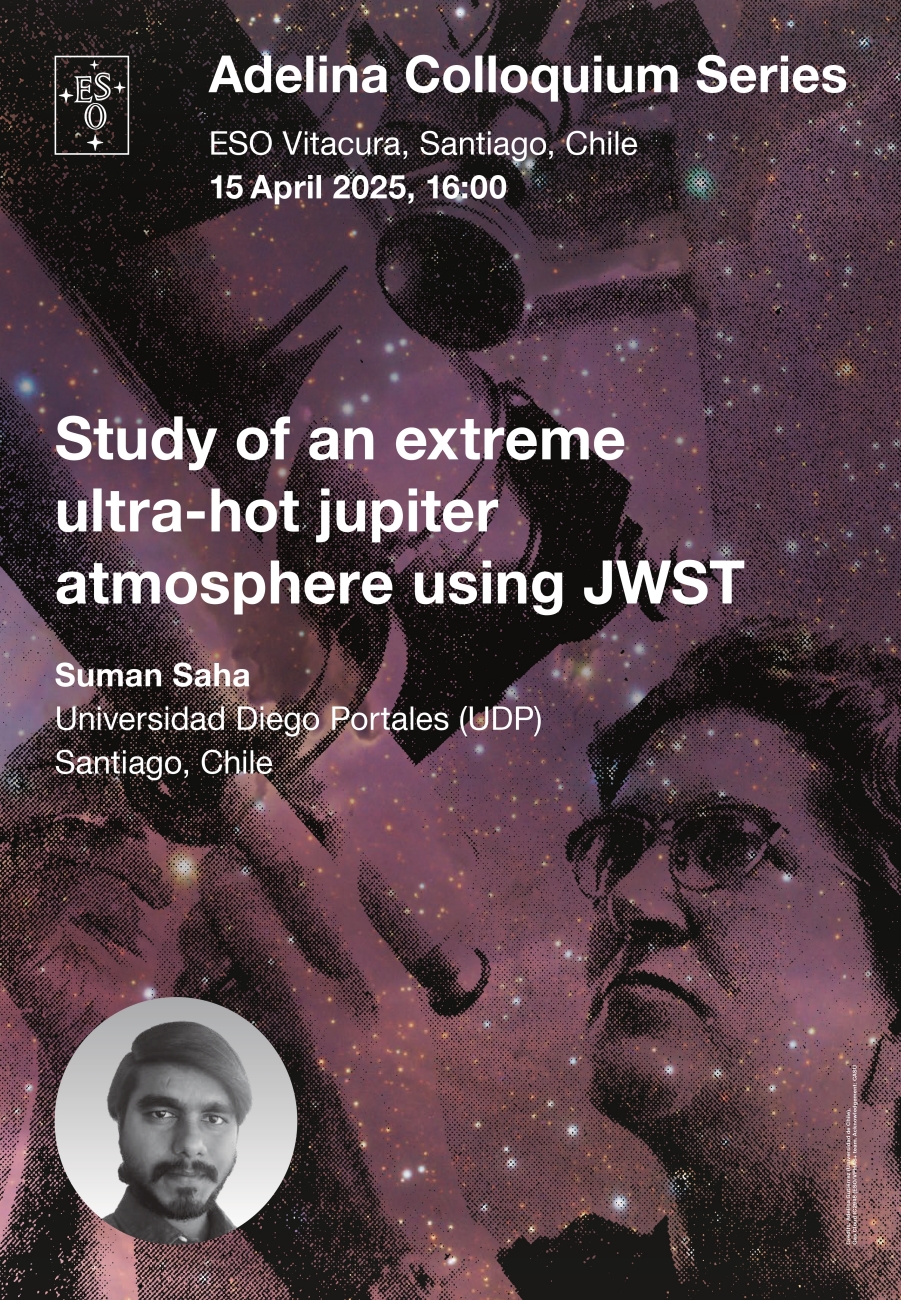Ultra-hot Jupiters through the Eye of JWST!
Ultra-hot Jupiters (UHJs) are believed to have undergone extreme formation and evolutionary pathways, making them ideal laboratories for uncovering the phenomena that have shaped their origins and atmospheric structures. The James Webb Space Telescope (JWST) provides an unprecedented capability for probing these exoplanets’ chemical and physical properties in exquisite detail. With its broad spectral coverage and high-precision instruments operating from the near- to mid-infrared, JWST offers unparalleled capacity to detect key molecular features in these extreme atmospheres, as well as cloud structures and atmospheric dynamics, through techniques such as transmission and emission spectroscopy.
In this talk, I will present the analysis of JWST transmission and emission spectroscopic observations of three particularly intriguing UHJs. I will discuss the data reduction and analysis techniques, which combine two independent reduction pipelines with multiple detrending methods, as well as the atmospheric modeling approaches, including retrieval analyses. Leveraging the exceptional quality of the JWST observations, we have detected several key molecular species in these extreme atmospheres and determined their abundances precisely, alongside constraining cloud compositions and structures. I will show how these precise measurements translate into robust estimates of atmospheric metallicities and, importantly, C/O ratios—a crucial indicator of the planets' formation and evolutionary histories. Finally, I will reflect on how these comprehensive chemical inventories of UHJs serve as valuable benchmarks for next-generation atmospheric models and theories of giant planet evolution

